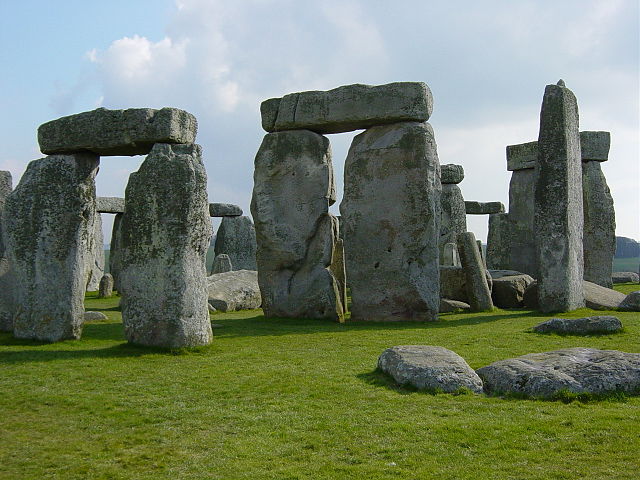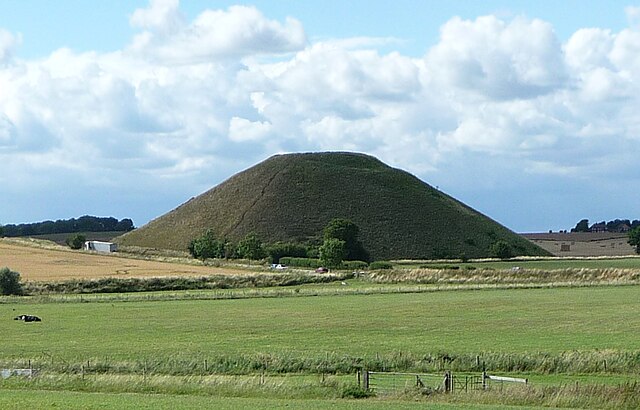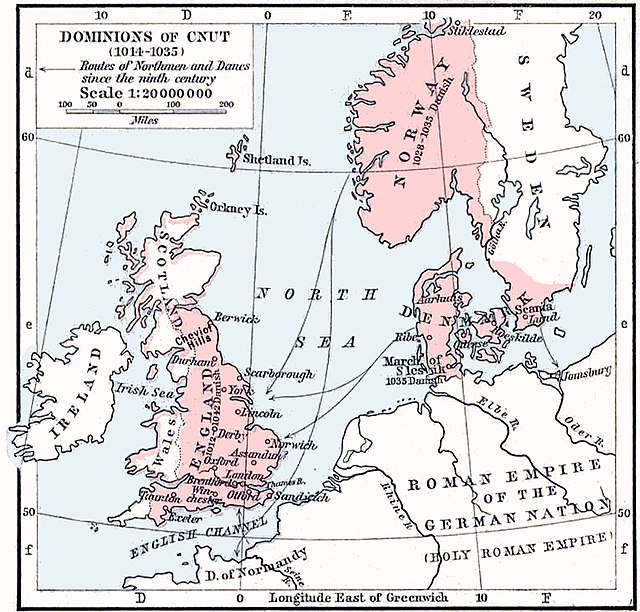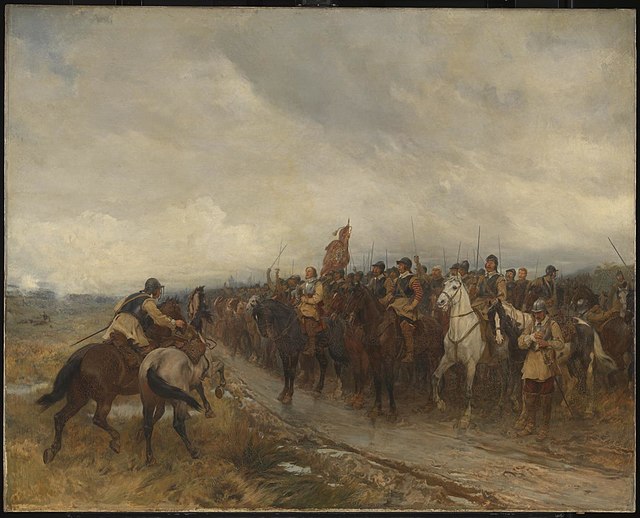England became inhabited more than 800,000 years ago, as the discovery of stone tools and footprints at Happisburgh in Norfolk have indicated. The earliest evidence for early modern humans in Northwestern Europe, a jawbone discovered in Devon at Kents Cavern in 1927, was re-dated in 2011 to between 41,000 and 44,000 years old. Continuous human habitation in England dates to around 13,000 years ago, at the end of the Last Glacial Period. The region has numerous remains from the Mesolithic, Neolithic and Bronze Age, such as Stonehenge and Avebury. In the Iron Age, all of Britain south of the Firth of Forth was inhabited by the Celtic people known as the Britons, including some Belgic tribes in the south east. In AD 43 the Roman conquest of Britain began; the Romans maintained control of their province of Britannia until the early 5th century.
Stonehenge, erected in several stages from c.3000–2500 BC
Silbury Hill, c. 2400 BC
Artefacts from Bush Barrow at Stonehenge. Wessex culture, Early Bronze Age, c. 1900 BC
View of the ramparts of the hillfort of Maiden Castle (450 BC), as they look today
The Kingdom of England was a sovereign state on the island of Great Britain from the early 10th century, when it emerged from various Anglo-Saxon kingdoms, until 1 May 1707, when it united with Scotland to form the Kingdom of Great Britain, which would later become the United Kingdom. The Kingdom of England was among the most powerful states in Europe during the medieval and early modern colonial periods.
The dominions of Cnut (1014–1035)
Fifteenth-century miniature depicting the English victory over France at the Battle of Agincourt
Portrait of Elizabeth I made to commemorate the defeat of the Spanish Armada (1588), depicted in the background. Elizabeth's international power is symbolised by the hand resting on the globe.
Cromwell at Dunbar. Oliver Cromwell united the whole of the British Isles by force and created the Commonwealth of England.








